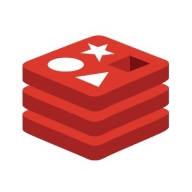

ScyllaDB and Redis compete in the high-performance database space. Redis often has the upper hand because of its extensive feature set and well-established reputation.
Features: ScyllaDB offers high throughput and low latency, making it ideal for IoT and time-series data. Its shard-per-core architecture enhances performance under heavy workloads. Redis is known for powerful in-memory data structures, optimizing performance for real-time analytics and dynamic applications. Redis provides geolocation and JSON search capabilities, enabling efficient data handling for various use cases.
Room for Improvement: ScyllaDB could enhance ease of use to better meet the needs of users without a deep understanding of configurations. Its documentation, while extensive, needs simplification to be more accessible to newcomers. Expanding compatibility with more data sources could broaden ScyllaDB’s appeal. Redis could benefit from improvements in handling complex data structures beyond caching, potentially making it more versatile. Additional native persistence options might strengthen Redis’s reliability in critical applications. Enhancements in cluster management could streamline operations for users requiring high scalability.
Ease of Deployment and Customer Service: ScyllaDB offers straightforward deployment and comprehensive enterprise-level support, which is highly valued. Redis provides versatile deployment options, including managed services for cloud environments, making it flexible for various use cases. ScyllaDB's proactive support is praised, while Redis relies on its strong community, requiring additional resources for specific implementation guidance.
Pricing and ROI: ScyllaDB's initial setup cost is competitive, offering strong ROI for data-intensive applications. Redis might have higher costs due to premium features but offers favorable ROI through operational efficiency in memory-intensive tasks. ScyllaDB is cost-effective for large datasets, while Redis's potential to streamline development and accelerate time-to-market often justifies its pricing.
| Product | Market Share (%) |
|---|---|
| ScyllaDB | 8.9% |
| Redis | 8.9% |
| Other | 82.2% |


| Company Size | Count |
|---|---|
| Small Business | 11 |
| Midsize Enterprise | 3 |
| Large Enterprise | 8 |
| Company Size | Count |
|---|---|
| Small Business | 3 |
| Midsize Enterprise | 2 |
| Large Enterprise | 8 |
Redis offers high-speed, in-memory storage, renowned for real-time performance. It supports quick data retrieval and is used commonly in applications like analytics and gaming.
Renowned for real-time performance, Redis delivers high-speed in-memory storage, making it a favorite for applications needing quick data retrieval. Its diverse data structures and caching capabilities support a broad array of use cases, including analytics and gaming. Redis ensures robust scalability with master-slave replication and clustering, while its publish/subscribe pattern renders it reliable for event-driven applications. The solution integrates smoothly with existing systems, minimizing performance tuning needs. Although documentation on scalability and security could be improved, Redis remains cost-effective and stable, commonly utilized in cloud environments. Enhancing integration with cloud services like AWS and Google Cloud and refining GUI may improve usability.
What are the key features of Redis?Redis finds application across industries for tasks like caching to improve application performance and speed, minimizing database load. It enables real-time processing for session storage, push notifications, and analytics. As a messaging platform, Redis handles high traffic and supports replication and clustering for cross-platform scalability.
ScyllaDB is an open-source, distributed NoSQL wide-column datastore (a highly scalable NoSQL database), known for its compatibility with Apache Cassandra, and for supporting the same protocols as Cassandra (CQL and Thrift) and the same file formats (SSTable). ScyllaDB is designed for high throughput and low latency, making it suitable for data-intensive applications. Its architecture allows it to deliver remarkable performance on a massive scale, utilizing modern multi-core servers to their fullest potential
ScyllaDB utilizes a similar architecture, data format, and query language as Apache Cassandra, providing compatibility while dramatically improving speed and scalability.
The key advantages of ScyllaDB include its rewritten C++ implementation that eliminates Cassandra's expensive Java garbage collection pauses, built-in caching for fast access to frequently used data, and shard-aware drivers for direct routing of requests. This enables it to fully leverage modern multi-core servers for massive parallelism. The community is active and the latest major release, ScyllaDB Enterprise 2023.1.0 LTS, incorporates over 5,000 code commits focused on enhancing capabilities.
ScyllaDB supports wide-column data modeling for fast read performance at scale. It includes integrated monitoring and management tools to track database health and performance. For organizations looking to boost speed and reduce costs for NoSQL workloads, ScyllaDB offers a drop-in replacement for Cassandra that delivers lower latency, higher throughput, and increased scalability with fewer nodes. Its seamless migration path makes switching from Cassandra seamless, requiring minimal code changes.
We monitor all NoSQL Databases reviews to prevent fraudulent reviews and keep review quality high. We do not post reviews by company employees or direct competitors. We validate each review for authenticity via cross-reference with LinkedIn, and personal follow-up with the reviewer when necessary.